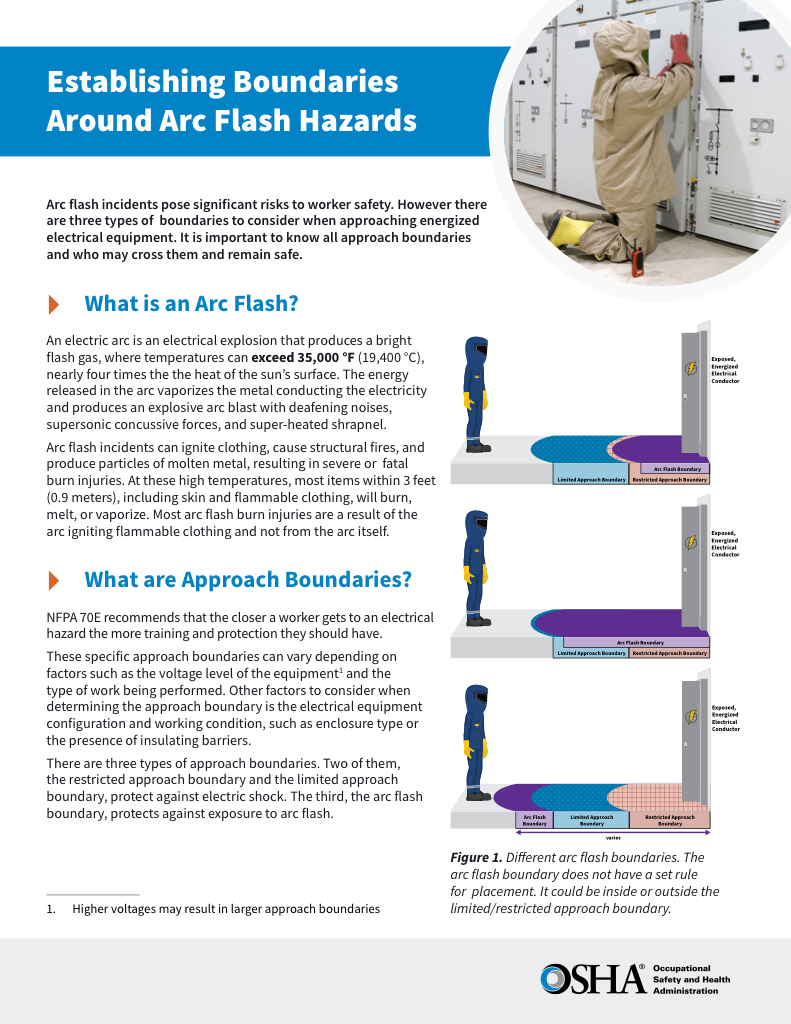Substation Automation Powers Smart Grids
By R.W. Hurst, Editor

Substation Relay Protection Training
Our customized live online or in‑person group training can be delivered to your staff at your location.

- Live Online
- 12 hours Instructor-led
- Group Training Available
Download Our OSHA 4474 Fact Sheet – Establishing Boundaries Around Arc Flash Hazards

- Understand the difference between arc flash and electric shock boundaries
- Learn who may cross each boundary and under what conditions
- Apply voltage-based rules for safer approach distances
Substation automation enhances power grid reliability by using intelligent devices and communication protocols for real-time monitoring, control, and protection. It reduces outages, improves efficiency, and enables remote access for smart grid integration.
What is Substation Automation?
Substation automation is a key component of modern electrical grid management that uses digital technologies to monitor, control, and protect substations:
✅ Improves reliability through real-time control and automation systems
✅ Enables remote monitoring and reduced human error
✅ Supports smart grid integration with intelligent electronic devices (IEDs)
Electrical Transformer Maintenance Training
Substation Maintenance Training
Request a Free Training Quotation
Core Components and Architecture
A typical automated system in electrical infrastructure is organized into three key levels. The process level involves field equipment such as sensors, actuators, and merging units that provide real-time data inputs. The bay level includes intelligent electronic devices, such as protection relays, that analyze data and execute protection control operations. Finally, the station level houses SCADA interfaces, servers, and HMIs that manage the full monitoring system.
To understand how these systems are integrated physically, see our article on electrical substation design.
Importance of Communication Protocols
IEC 61850 is the cornerstone protocol that enables fast and reliable communication between smart devices. It ensures interoperability across equipment from different vendors, supports high-speed response for protection applications, and provides a standardized data model that simplifies integration.
You can learn more about how communication technologies are evolving in our detailed overview of the digital substation.
Design, Implementation, and Integration
Successful automation implementation starts with a project-oriented design tailored to site-specific requirements. For legacy facilities, compatibility with existing infrastructure is essential. Most upgrades begin by introducing intelligent IEDs at the bay level before transitioning to full SCADA and communication upgrades.
Test Your Knowledge About Electrical Substations!
Think you know Electrical Substations? Take our quick, interactive quiz and test your knowledge in minutes.
- Instantly see your results and score
- Identify strengths and areas for improvement
- Challenge yourself on real-world electrical topics
Testing and commissioning ensure performance, safety, and long-term stability. To understand the equipment's foundational role, see our page on electrical substation components.
Enhancements in Reliability, Efficiency, and Safety
Modern automation offers significant improvements in uptime, safety, and efficiency. Real-time monitoring enables immediate fault detection, while automated control systems minimize response time and reduce human error. Predictive maintenance tools, enabled through data analytics, forecast equipment issues before failure occurs.
Our guide to electrical substation maintenance outlines how condition-based monitoring is transforming maintenance practices.
Integration with Smart Grid and Emerging Technologies
Substation automation is also crucial for integrating distributed energy resources, such as solar and wind. By incorporating IoT sensors and edge computing devices, substations can adapt to real-time fluctuations in load and generation. Artificial intelligence is increasingly being used to forecast energy patterns and manage dynamic system states more effectively.
To learn how these technologies are applied in practice, visit our substation automation training course page.
For background on the overall concept, refer to our general introduction to what is an electrical substation.
Frequently Asked Questions
What is the role of IEC 61850 in substation automation?
IEC 61850 is a communication standard that enables fast, interoperable data exchange between intelligent devices. It supports high-speed control, fault detection, and seamless integration of multi-vendor equipment.
How do protection relays function in a monitoring system?
Protection relays detect electrical faults and send trip signals to disconnect affected circuits. Automated systems respond rapidly and can be configured remotely, improving fault clearing and safety.
Can legacy substations be upgraded to support automation?
Yes, existing substations can be retrofitted with modern IEDs, communication links, and SCADA systems. Gradual upgrades often begin with the bay level and expand upward.
Related Articles




